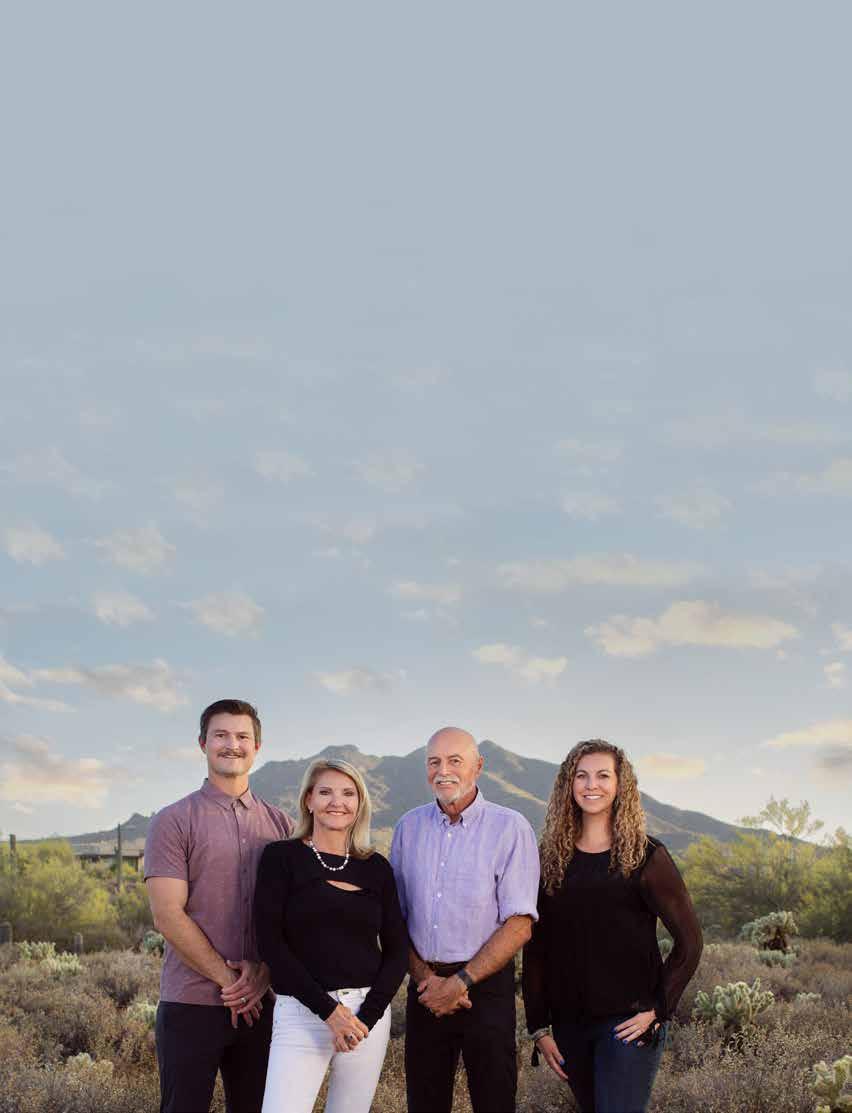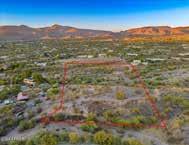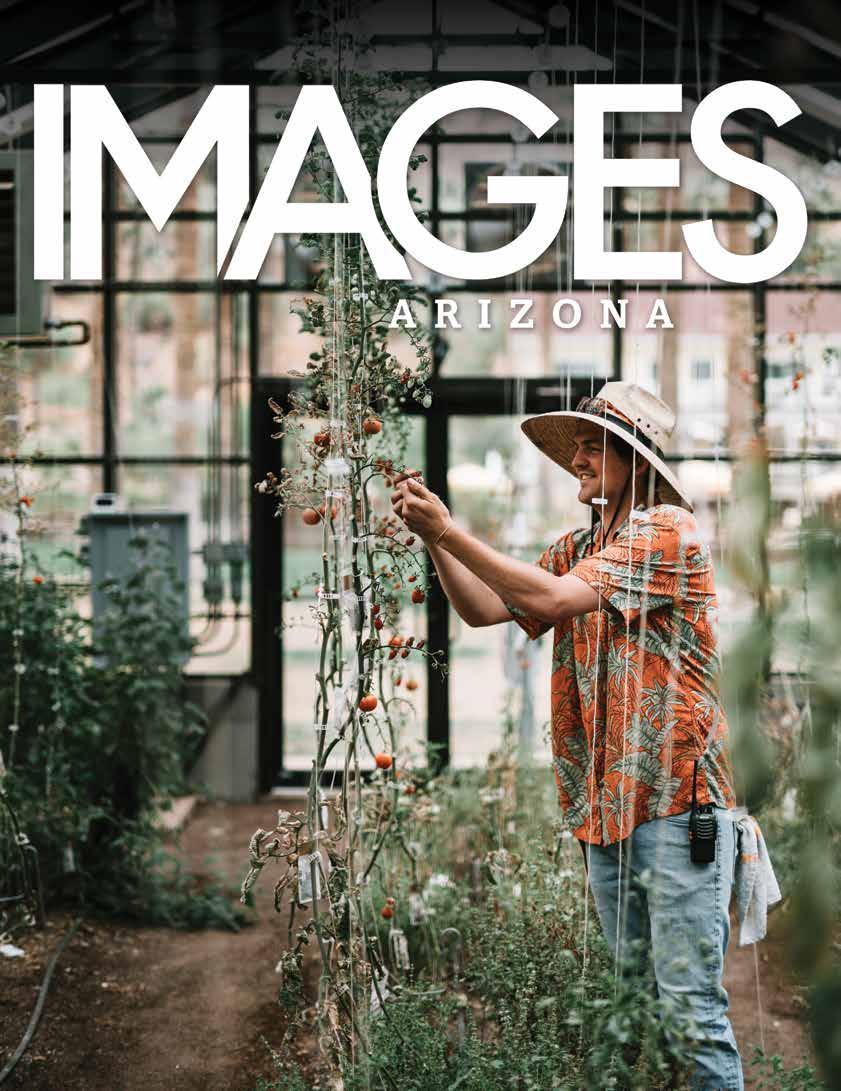
E T A G E
H A N G E
O U . C H A N G E T H E W A Y Y O U A G E .



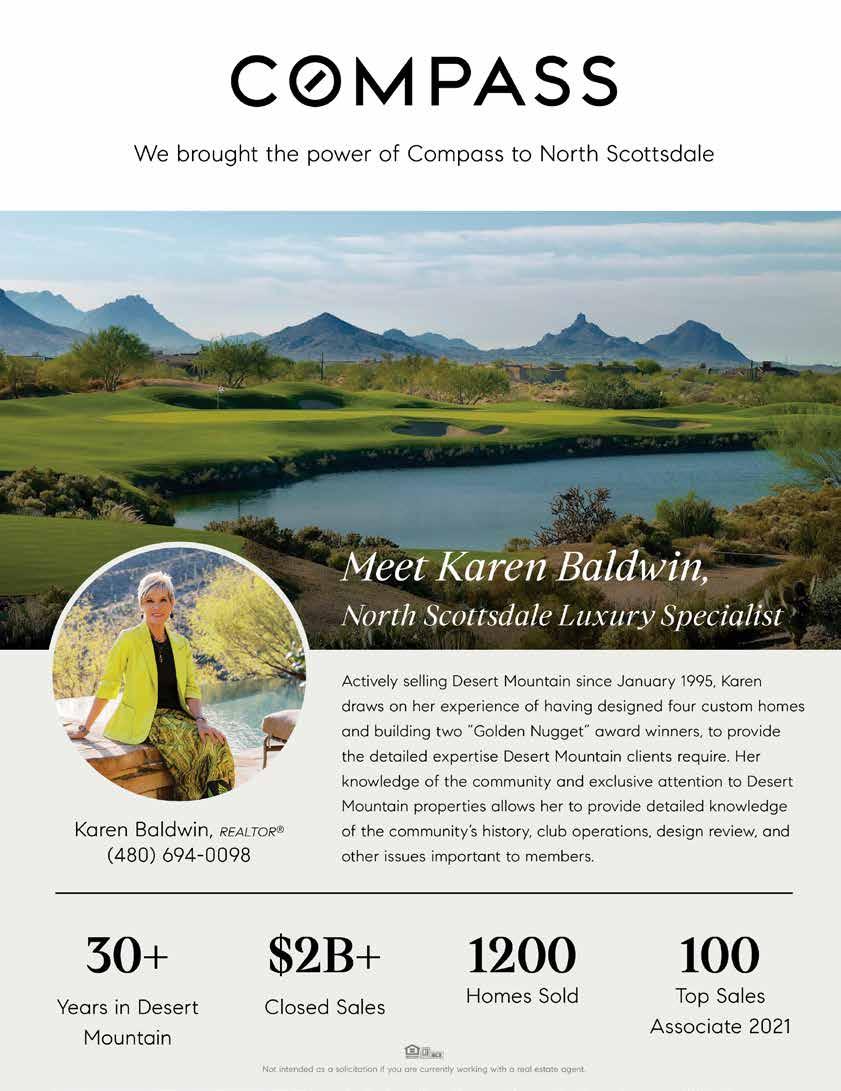
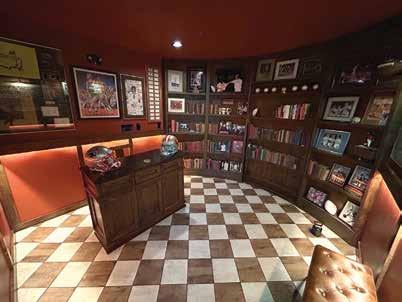









E T A G E
H A N G E
O U . C H A N G E T H E W A Y Y O U A G E .












As we make selections for our home furnishings, numerous factors influence our choices. But I believe the primary motivation behind what you add to your home is deeply emotional — it’s all about feelings!
How will this make me feel? How will it make my home feel? How will my family feel with this selection?
Your finished room represents a collection of decisions — choices about theme, comfort, color, texture and perhaps price — decisions that you feel good about. Each individual item contributes to the complete feeling you’re working to achieve.
I’d like to use this room setting as an example of creating a space that resonates emotionally. The upholstered swivel lounge chairs feature a comfortable fabric that will mix in many color schemes. Now, use your imagination to feel the comfort as you sink into these chairs with your feet up on the ottoman. Bryce Pettit’s bronze fox perched on the ottoman looks perfectly comfortable and adds a whimsical touch to the setting, while the cream fur pillows introduce a luxurious softness that enhances the overall feeling of comfort.

The reverse-painted saguaro artwork by Rene Palomino serves as the statement piece in this arrangement. This fabulous desert icon adds a contemporary glam feel, bringing the outside in. Flanking both sides of the saguaro is a pair of sculptural tall bronze metal lamps with a rich, sophisticated, organic quality that perfectly complements the art.
A parade of bronze quail sculptures by Bryce Pettit adds another layer of emotional connection. They bring a warm, heartfelt dimension to the setting.
The leather-laced lounge chair pictured above exemplifies how an accent piece can set the stage for an entire room. The detailed leather-laced frame with linen back pillows creates a statement piece that’s art in its own right. Whether placed in a bedroom or living area, it establishes a contemporary, casually elegant feeling
Have fun furnishing your home! Pay attention to the details that make each piece a significant decision. You can create spaces that reflect exactly the feeling you desire — spaces that truly feel like home.



















Publisher Shelly Spence
Managing Editor Joseph J. Airdo
Graphic Designer
Meaghan Mitchell
Contributing Writers
Joseph J. Airdo
Francine Coles
Shoshana Leon
Rebecca L. Rhoades
Shannon Severson
Photographers
Francine Coles
Loralei Lazurek
Advertising Sales
Cindi Calcinari
860-966-3271
cindi@imagesaz.com
Images Arizona P.O. Box 1416
Carefree, AZ. 85377
623-341-8221
shelly@imagesaz.com imagesarizona.com

AAs the mercury rises and summer settles across our sun-baked landscape, Arizona reveals a different kind of magic — one that beckons exploration beyond the familiar. This special collector’s edition of Images Arizona marks the first installment of our ultimate Arizona travel guide, inviting you to discover the extraordinary tapestry of experiences our state has to offer.
Arizona in summer is a study in contrasts. While the valleys shimmer with heat, our northern highlands offer cool pine-scented respite. While tourists flock to well-trodden destinations, countless hidden treasures await just off the beaten path — places where the true character of our state unfolds in whispers rather than shouts.
In these pages, we’ve assembled a collection of summer excursions ranging from the adrenaline-pumping to the delightfully eccentric. We venture beyond postcard panoramas to uncover the small-town celebrations, tucked-away swimming holes, family-owned eateries and quirky roadside attractions that give Arizona its distinctive personality.
From Flagstaff’s vibrant festival scene to Sedona’s lesser-known trails, from Prescott’s historic haunts to the surprising cultural gems of rural communities, this issue serves as your passport to Arizona’s summer splendor. We’ve sought out experiences that will surprise even longtime residents — proving that after all these years, our magnificent state still holds secrets worth discovering.
I encourage you to keep this issue close at hand throughout the summer and beyond — dog-eared, annotated and well-loved. We’ve designed it not as a fleeting read but as a perennial resource to inspire countless adventures. This is merely part one of our journey — watch for our August-September issue, which will complete this keepsake collection exploring Arizona’s remarkable destinations.
Here’s to summer roads less traveled and stories worth sharing!
Happy exploring,
Shelly Spence Publisher, Images Arizona









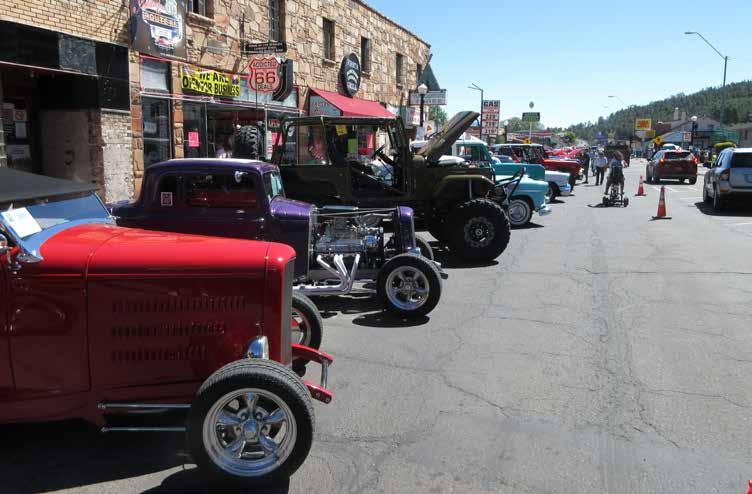
AArizona’s mountain towns and high-elevation destinations come alive in summer with festivals and celebrations that offer perfect escapes from desert heat. From classic car shows and bluegrass gatherings to world-class rodeos and renowned birding festivals, these signature events showcase the state’s diverse cultural heritage in stunning outdoor settings. Mark your calendars for these unforgettable experiences that promise adventure and entertainment this summer.
The iconic town of Williams transforms into an automotive wonderland as hundreds of meticulously restored classics and custom hot rods line Historic Route 66. This beloved showcase draws more than 500 vehicles and thousands of enthusiasts to the cool pines of northern Arizona. Special guest “Horny Mike” from TV’s “Counting Cars” makes an appearance Friday, while participants enjoy a festive “Burger Burn,” the popular “Cruise the Loop” parade featuring this year’s “Classic Generations” theme, and a spirited live auction benefiting American Legion Cordova Post 13. Free. 7 a.m.–10 p.m. Downtown Williams, Historic Route 66, Williams. williamshistoricroute66carshow.com

Wheeler Park transforms into a vibrant wonderland during Flagstaff’s beloved summer kickoff celebration. This extravaganza pulses with live music headlined by Orkesta Mendoza’s Latin rhythms and The California Honeydrops’ soulful grooves. Signature spectacles include a whimsical bicycle parade, towering puppet procession and creative costume contest. Children discover a dedicated area with hands-on activities, while vendors create a marketplace of tempting foods and artwork. The event benefits three local nonprofits — savvy attendees score free admission by being among the first 250 each day to donate nonperishable items. $15+. 10 a.m.–9 p.m. Saturday, 11 a.m.–6 p.m. Sunday. Wheeler Park, 212 W. Aspen Ave., Flagstaff. flaghullabaloo.com

String instruments gleam in the mountain sunlight as more than 100 musicians gather for the 23rd annual celebration of folk traditions. This intimate festival creates a magical atmosphere where the boundaries between performer and audience dissolve into spontaneous collaborations. Across multiple stages, the air resonates with everything from haunting Appalachian ballads to foot-stomping bluegrass. Acclaimed touring artists perform alongside homegrown talent while visitors explore craft displays and watch impromptu jam sessions spring up across the historic grounds. $15. 9:30 a.m.–6 p.m. Saturday, 9:30 a.m.–4 p.m. Sunday. Coconino Center for the Arts and Pioneer Museum, 2300 N. Fort Valley Road, Flagstaff. flagfolkfest.org



PRESCOTT BLUEGRASS FESTIVAL

The historic Courthouse Plaza transforms into a bluegrass haven during this celebrated free festival, now in its 44th year. Shady elm trees provide natural amphitheater seating as five exceptional bands — including headliner High Plains Tradition — deliver authentic Americana music. Festival-goers spread blankets for this beloved tradition that remains the only free bluegrass festival of its caliber in the western United States. Beyond stellar music, visitors enjoy a vibrant marketplace, raffle prizes and impromptu jam sessions that spring up around the grounds. The downtown setting allows exploration of Prescott’s charming Whiskey Row between sets. Free. 11 a.m.–9 p.m. Saturday, 11 a.m.–3:30 p.m. Sunday. Yavapai County Courthouse Plaza, Prescott. prescott.org/prescottbluegrassfestival
PRESCOTT FRONTIER DAYS’ WORLD’S OLDEST RODEO
Cowboys and cowgirls gather in Prescott for America’s most historic rodeo, celebrating its 138th anniversary in 2025. This weeklong celebration features eight action-packed performances showcasing top competitors in bull riding, steer wrestling, barrel racing and the newly added women’s breakaway roping. Festivities extend beyond the arena with the beloved Rodeo Parade through downtown on July 5, featuring this year’s theme “Women of Rodeo.” Dance boots hit the floor at nightly rodeo dances, while vendors offer authentic Western gear throughout the grounds. See website for prices and schedule of events. Prescott Rodeo Grounds, 840 Rodeo Drive, Prescott. worldsoldestrodeo.com
PRESCOTT FILM FESTIVAL
The Prescott Film Festival celebrates its 15th anniversary with five days of independent cinema across multiple historic venues. The festival’s crown jewel — the breathtaking Silent Symphony — returns to the 1905 Elks Theater, where musicians accompany classic silent films. At Hendrix Theatre, audiences join an interactive sing-along screening of “The Wizard of Oz.” What began in 2008 as a grassroots gathering has blossomed into a vital program within Yavapai College’s Film and Media Arts curriculum. Against the backdrop of Prescott’s Victorian downtown, the festival offers the perfect cultural escape for film lovers. See website for prices and schedule of events. The Jim & Linda Lee Performing Arts Center at Yavapai College, 1100 E. Sheldon St., Prescott. prescottfilmfestival.com

25–27
Against the dramatic backdrop of Sedona’s towering red rocks, nature’s most dazzling aerial performers take center stage during peak migration season. The International Hummingbird Society’s 11th annual festival offers opportunities to witness eight different species as they dart through the desert landscape. Highlights include intimate “Breakfast with Hummingbirds” events at private residences and banding demonstrations. The celebration features expert presentations, guided garden tours, and a marketplace of specialized feeders and artwork. Photography enthusiasts capture breathtaking images as these iridescent marvels perform aerial ballets. Free+. See website for schedule of events. Sedona Performing Arts Center, 995 Upper Red Rock Loop Road, Sedona. sedonahummingbirdfestival.com
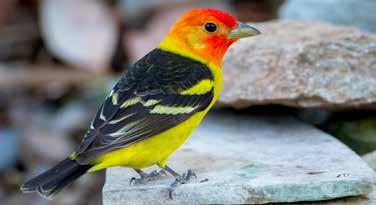
July 30–Aug. 2
Southeastern Arizona’s premier birding event celebrates its 34th year in Sierra Vista, where the legendary Sky Islands create one of North America’s most diverse avian habitats. This festival offers expertly guided excursions to hotspots including the Huachuca Mountains, where rare Mexican species like elegant trogons make northern appearances. Special guest Stephen Moss delivers this year’s keynote on “Ten Birds That Changed the World.” The festival features small-group van tours, selfdrive caravans, free bird walks, educational presentations, and vendor exhibits including optics demonstrations by Swarovski. Free+. See website for schedule of events. The Mall at Sierra Vista, 2200 El Mercado Loop, Sierra Vista. swwings.org





Writer Joseph J. Airdo

Desert Hills Community School of Music presents its third annual Band Camp for wind and percussion players ages 10–16, offering both half-day and full-day programs on the campus of Desert Hills Presbyterian Church in North Scottsdale. Campers build musical skills in small and large ensembles, try new instruments and interact with professional musicians. New this year: a handbell class and free transportation for select full-day participants. The week culminates in a public concert. $375+; scholarships available. 34605 N. Tom Darlington Road, Scottsdale. deserthillsmusic.org/band-camp
June 7
NRCHA KIMES RANCH DERBY
The National Reined Cow Horse Association presents this prestigious event showcasing 4- and 5-year-old horses and riders competing in herd work, rein work and cow work. The competition includes nine divisions to accommodate all skill levels, from million-dollar professionals to entry-level competitors. Special features include the Holy Cow Performance Horses CD Survivor Open Bridle Spectacular with $25,000 in added money and a full slate of horse show classes with over $52,000 in added prize money. See website for price and schedule of events. WestWorld of Scottsdale, 16601 N. Pima Road, Scottsdale. nrcha.com/events/nrcha-derby
June 2
CULINARY BOOK CLUB: JULIA CHILD
Join food and literature enthusiasts for a celebration of Julia Child. Participants discuss “The Secret War of Julia Child” by Diana R. Chambers while sharing dishes prepared from Child’s cookbooks. Bring your prepared dish, recipe copy and serving utensils. Free. Noon–2:30 p.m. Desert Foothills Library, 38443 N. School House Road, Cave Creek. 480-488-2286; dfla.org
June 6–8
The Musical Instrument Museum presents a weekend dedicated to America’s original art form through interactive workshops and live performances showcasing jazz’s evolution and influence. The event features hands-on activities with brass and percussion instruments, educational exhibits on legendary artists, and demonstrations of improvisation techniques. Live performances highlight various jazz styles from traditional New Orleans to contemporary fusion. $20; discounts available for youth and members. 9 a.m.–5 p.m. Musical Instrument Museum, 4725 E. Mayo Blvd., Phoenix. 480478-6000; mim.org
June 6–8
Downtown Phoenix transforms into a pop culture paradise as one of the West Coast’s largest conventions returns with celebrity guests, panels, exhibits and cosplay. The 2025 event features a “Lord of the Rings” hobbits reunion, “Daredevil” stars Charlie Cox and Vincent D’Onofrio, Kevin Smith and Jason Mewes, plus Marisa Tomei, Simon Pegg, Rainn Wilson and Ron Perlman. The family-friendly convention also highlights local artists and supports literacy and adoption charities. $39+; children 12 and under free. Phoenix Convention Center, 100 N. Third St., Phoenix. phoenixfanfusion.com
June 10
GET LIT BOOK CLUB
Desert Foothills Library’s happy hour book club discusses “All the Colors of the Dark” by Chris Whitaker. Drinks and socializing at 5 p.m., discussion at 5:30 p.m. See website for restaurant location. Free. Registration required. 5–6:30 p.m. 480-488-2286; dfla.org
June 12
LIBRARY BOOK CLUB
Desert Foothills Library hosts an open discussion of “Tom Lake” by Ann Patchett. Free. Registration required. 10 a.m.–noon. Desert Foothills Library, 38443 N. School House Road, Cave Creek. 480-488-2286; dfla.org
June 13–14 and July 11–12
CHAPTER 2 BOOKS’ MONTHLY SALE
The North Valley’s largest used bookstore offers discounted books, media and puzzles. Friday 9 a.m.–5 p.m. Saturday 10 a.m.–4 p.m. Chapter 2 Books at Desert Foothills Library, 38443 N. School House Road, Cave Creek. 480-488-2286; dfla.org
June 14
HALL OF FLAME FUNDRAISER
Support the Hall of Flame Museum Volunteer Organization at this special Arizona Diamondbacks game against the San Diego Padres. Proceeds benefit the museum volunteers who help teach fire safety and promote fire service education. See website for price. 4:15 p.m. Chase Field, 401 E. Jefferson St., Phoenix. gofevo.com/event/hallflame2
June 17
BOOKS TO DIE FOR: MURDER MYSTERY BOOK CLUB
Desert Foothills Library’s mystery book club discusses “The Engine House” by Rhys Dylan. Light refreshments provided. Free. Registration required. 4–5 p.m. Desert Foothills Library, 38443 N. School House Road, Cave Creek. 480-488-2286; dfla.org


Writer Joseph J. Airdo

A half-mile segment of the Stoneman Road Military Trail in Carefree has been listed in the National Register of Historic Places. Dating back 155 years, the trail began as an ancient Native American route before serving as a vital U.S. Army supply line between Fort Whipple and Fort McDowell from 1870 to 1890. This wellpreserved segment, which crosses a 48-acre parcel of pristine Sonoran Desert, features old-growth saguaros and diverse wildlife. Carefree Park, the nonprofit organization that secured the designation, now aims to acquire the state-owned land through auction to establish the town’s first community park. Community members can support this preservation effort through donations and pledges on the organization’s website. Arizona State Parks & Trails has expressed support for the preservation effort. carefreepark.org
June 17
‘GETTYSBURG AND VICKSBURG’
The Holland Center presents a lecture on two pivotal Civil War battles that occurred on the same weekend in 1863. Historian Jim Sherbert examines Gettysburg, the bloodiest battle in American history with more than 50,000 casualties, and Vicksburg, the conflict that broke the back of the Confederacy and propelled Ulysses S. Grant to leadership of the U.S. Army. The presentation explores the impact of both battles on American history. Free; donations appreciated. 4 p.m. The Holland Center, 34250 N. 60th St., Scottsdale. 480-488-1090; hollandcenter.org
June 23–27
JUBILATE CONSERVATORY SUMMER INTENSIVE
Jubilate Conservatory of Music presents a five-day summer intensive program featuring “The Wisdom of Oysters,” an original musical written by JCM founders Laya and Richard Field. Students ages 5–18 will sing, act, dance and play instruments in their own orchestra while bringing to life this underwater tale. The program culminates in a performance on the final day. See website for price and schedule. Spirit in the Desert Retreat Center, 7415 E. Elbow Bend Road, Carefree. jubilateconservatoryofmusic.org
July 4
SCOTTSDALE’S FOURTH OF JULY CELEBRATION
Scottsdale presents its 12th annual Independence Day event featuring the largest fireworks display in Scottsdale history, bull riding, a summer slider-eating contest, water balloon championship and family activities. The celebration includes a “Parade of Heroes” honoring outstanding community leaders, live entertainment, backyard BBQ by M Culinary and a dramatic fireworks finale against the backdrop of the McDowell Mountains. $25+; children under 6 free. 5–9 p.m. WestWorld of Scottsdale, 16601 N. Pima Road, Scottsdale. scottsdale4th.com
July 10
Desert Foothills Library hosts an open discussion of “Three Days in June” by Anne Tyler. Free. Registration required. 10 a.m.–noon. Desert Foothills Library, 38443 N. School House Road, Cave Creek. 480-488-2286; dfla.org
July 11–13
EXPERIENCE FRANCE
The Musical Instrument Museum celebrates French musical heritage through interactive workshops and
live performances showcasing regional traditions from Provence to Paris. The event features hands-on activities with accordions and other traditional instruments, educational exhibits highlighting France’s musical innovations, and demonstrations of classical and folk styles. Live performances present everything from cafe music to impressionist compositions. $20; discounts available for youth and members. 9 a.m.–5 p.m. Musical Instrument Museum, 4725 E. Mayo Blvd., Phoenix. 480-478-6000; mim.org
The Kiwanis Club of Carefree Benefit Foundation celebrated its 40th annual “A Night of Excellence” scholarship ceremony at Cactus Shadows Fine Arts Center in May. The event honored 32 outstanding high school seniors from across Arizona with scholarships totaling $550,000 to support their higher education goals. Former NFL player Ricky Watters, a Super Bowl champion and five-time Pro Bowler, delivered the keynote address and received the Kiwanis “Champion for Kids” award for 2025. The Kiwanis Club, which has awarded over $4 million in scholarships to date, funds its community initiatives primarily through the Kiwanis Marketplace thrift store in Cave Creek. kiwanisscholarship.org


RRising from the rugged Bradshaw Mountains just an hour north of Phoenix, Castle Hot Springs stands as a testament to Arizona’s rich history and its modern renaissance as a luxury wellness destination. The resort, which draws its name from the natural hot springs that produce more than 200,000 gallons of pure, odorless 120-degree mineral water daily, has evolved from a historic retreat for America’s elite to a contemporary culinary oasis that celebrates the bounty of the desert.
Castle Hot Springs’ fascinating history is steeped in both fact and folklore. While local lore suggests U.S. Army Col. Charles Craig discovered the springs in 1867, historical records indicate Euro-American settlers and prospectors found the area in the late 19th century, with Indigenous Yavapai and Apache people having utilized these healing waters

for centuries prior. Nearly three decades later, Frank Morrill Murphy, a self-made millionaire from Wisconsin, recognized the potential of these therapeutic waters and opened Castle Hot Springs as a luxury healing retreat in 1896.
The resort quickly became the winter playground for some of America’s wealthiest and most influential families. The guest registry included the Rockefellers, Vanderbilts, Wrigleys, Roosevelts, Cabots and Carnegies. Several U.S. presidents, including Woodrow Wilson, Calvin Coolidge and Herbert Hoover, sought respite at the desert hideaway. In 1945, a young John F. Kennedy spent several months at Castle Hot Springs recovering from injuries sustained during World War II.
After Frank Murphy’s death in 1917, Castle Hot Springs changed hands several times before being purchased by the Talley family, who also owned the Arizona Biltmore. Tragedy struck in 1976 when a spark from a fireplace ignited a fire that destroyed the main hotel building. The property subsequently served as an Arizona State University conference center until 1987, then exchanged ownership multiple times before a partnership of local investors purchased it in 2014.
“The ownership and management group consists of Arizona natives who did this for the legacy and history of Castle Hot Springs and Arizona,” says Steve Sampson, who was involved with the resort’s revival. “The vision was for Castle Hot Springs to be reborn as a luxury wellness and adventure retreat, and to once again become a premier resort destination.”
What you’re tasting in our produce is almost like mineral water concentrates — it’s almost like tasting the ocean. Ian Beger “
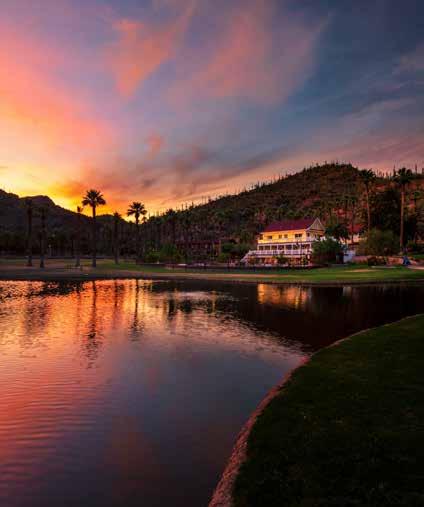


After a meticulous five-year restoration, Castle Hot Springs reopened in 2019 to worldwide acclaim and has since established itself as one of the nation’s most luxurious hot springs resorts. In 2025, it celebrates more than six years of providing guests with an unparalleled retreat experience that honors its historical roots while embracing modern luxury.
Today’s Castle Hot Springs features 34 luxury cabins and bungalows, some with piping directly from the hot springs into oversized soaking tubs with open ceilings, allowing guests to enjoy the therapeutic waters under a canopy of stars. Five original buildings have been carefully restored, preserving the property’s historical character while incorporating contemporary amenities.
“The mood, music and aura of the property connect directly to the early 20th century,” Sampson explains. “It’s truly a step back in time.”
This blend of historical authenticity and modern luxury has made Castle Hot Springs a destination for both adventure and wellness seekers.
“We see many Arizonans as frequent guests, as well as affluent travelers from across the country who appreciate the rich history and unique experience we offer,” Sampson says.
Guests can choose from a variety of activities to recharge, including soaking in the hot springs, hiking the surrounding mountains, relaxing by the pool or enjoying a therapeutic massage in the expanded spa cabana. Modern additions include a via ferrata adventure course, dual pickleball courts, plein air painting classes, and a dedicated history
room with curated exhibits. The property also maintains horses and stables, honoring its legacy as a Western destination.
While the thermal pools may have initially drawn visitors to Castle Hot Springs, the resort’s culinary program has emerged as an equally compelling attraction — one that has evolved significantly since the property’s reopening.
What began as a modest fan-shaped culinary garden supplying herbs, microgreens and edible flowers has blossomed into a comprehensive agricultural program spanning 5 acres. This expansion includes a 1-acre main garden with high-tunnel greenhouses, a specialized tomato greenhouse, a 3-acre agave farm for house-made spirits, a quarter-acre of stone fruit trees and a flourishing citrus orchard.
Following agronomist Ian Beger around the expansive gardens at Castle Hot Springs is like spending time with Mother Nature’s version of Willy Wonka. Knowledgeable and passionate about every plant under his care, he eagerly shares gardening wisdom and random tidbits about each variety.
“Our main goal is to provide the best quality fruits, vegetables and herbs to the kitchen, bar and, ultimately, the guests,” Beger says. “We’re focused on flavor more than anything.”
As he strides through rows of verdant greenery, Beger is constantly plucking, picking and trimming with an acute awareness of every leaf, stalk and petal. He reaches down and removes a fleshy, ruffled leaf studded with shimmering crystals that look like hoarfrost — glacier lettuce, an edible succulent that’s crisp with a slight seawater bite.
“This plant really does a good job of expressing what the spring water does to the produce,” Beger explains. “What you’re tasting is almost like mineral water concentrates. It’s almost like tasting the ocean.”
The farm now supplies more than 80% of the restaurant’s vegetables — an impressive feat considering Harvest, the resort’s restaurant, serves three meals daily to approximately 60 guests. More than 500 varieties of produce are grown on-site, with the farm team experimenting with about 30% new crops each year.
“We have very unique growing conditions,” Beger says. “We use spring water for everything, and we’re in a valley. It’s unlike anywhere else that I’ve ever grown before.”
To determine which plants thrive in these distinctive conditions, the farm team has trialed more than 1,000 varieties of produce since the resort’s reopening. Produce that isn’t consumed immediately



is pickled, cured or fermented, preserving flavors for out-of-season use. Herbs and flowers are dried for teas and simple syrups.
In recent years, the resort has added 100 laying hens, allowing Harvest to serve farm-fresh eggs alongside the bounty of fruits and vegetables. Daily farm tours and immersive culinary workshops have become highlights for guests eager to deepen their understanding of sustainable agriculture.
The evolution of Castle Hot Springs’ culinary program parallels the growth of its agricultural endeavors. When the resort reopened, Chef Christopher Brugman launched Harvest Restaurant, establishing a farm-influenced approach to dining. In late 2020, sous chef John Amman took over as executive chef, deepening the connection between farm and table.
“Our concept has changed a lot since our first season,” Amman explains. “We had this farm in our backyard, and it wasn’t as much of a highlight as it is now. There was a natural evolution of utilizing the produce we grow and minimizing waste, which is something we really focus on here.”
For Amman, the farm’s diversity presents both challenges and opportunities for creativity in the kitchen.
“Ian’s lucky because he has one customer,” Amman says with a smile. “I’m buying it all. The challenge for the back of the house is how we are going to use all of the stuff from the farm. It has really helped me find my culinary style.”
One guest-favorite dish is the Mokum carrot bisque, featuring small, exceptionally sweet carrots grown on the property.
“It’s the best carrot you’ll ever have,” Amman says. “The carrots are as sweet as candy, and that makes a substantial impression on the dish. People come back just for the Mokum carrot soup.”
Amman also points to the intermezzo, or amuse-bouche, as a highlight of the dining experience. This chef-curated surprise bite isn’t listed on the menu but provides an opportunity for the culinary team to showcase the day’s harvest in creative ways.
“It’s a small bite, but it’s straight from the farm,” Amman notes.
Throughout the resort, the bounty of the farm appears in unexpected places. Bartenders use fresh-pressed sugarcane juice to sweeten house-made lemonade as part of an innovative molecular mixology and farm-to-bar program. The refreshing hibiscus tea — a fuchsia-hued welcome drink offered upon arrival — features hibiscus flowers and blue spice basil grown on site. Fresh-picked tomatoes, celery, onions, garlic and herbs serve as the base for the resort’s signature Bloody Mary mix.
The Castle Hot Springs Brewery, housed in the renovated historic laundry building, produces a house lager made with mineral water from the hot springs. New amenities include agave spirit tastings featuring products from the resort's 3-acre agave farm and the popular Sonoran Epicurean Escape culinary retreats.
Castle Hot Springs has successfully bridged its storied past with contemporary luxury, creating an experience that resonates with today’s discerning travelers while honoring the property’s historical significance. The integration of wellness, adventure and exceptional farm-to-table dining has positioned the resort among the nation’s premier destinations.
“I do see our dining as being a huge driving force with our guests,” Beger observes. “We’re really trying to be creative with it and take it to new levels.”
While guests initially may be drawn to Castle Hot Springs for its healing waters and historical significance, they return for the complete experience — one that nourishes body and soul through thoughtful hospitality, natural beauty and culinary excellence that can only be described as a true taste of Arizona.
castlehotsprings.com




AArizona’s breathtaking landscapes make it one of the most photogenic places on Earth. From majestic mountains to sensational sunsets and statuesque saguaros, these 13 landmarks showcase our state’s most impressive natural pageantry, guaranteed to make your social media followers envious.
Located on Route 163 near mile marker 13 at the Arizona-Utah border, this iconic spot where Forrest Gump ended his cross-country run offers one of the most spectacular views of Monument Valley. With majestic crimson mesas and the unmistakable silhouettes of the East and West Mittens — those towering 1,000-foot buttes — framing the horizon, this instantly recognizable piece of cinematic history provides the quintessential American Southwest backdrop for your final Instagram masterpiece.

Soaring 750 feet above the floor of Canyon de Chelly, Spider Rock is a breathtaking sandstone spire revered as the home of Spider Woman, the mythical Navajo deity who taught her people the art of weaving. This iconic formation, viewed best from the South Rim overlook, stands sentinel over a landscape rich with ancient ruins and petroglyphs. Sunrise and sunset illuminate the spire in brilliant reds and golds, creating dramatic shadow play that makes for unforgettable images within this sacred Navajo landscape.
The most exclusive landmark on our list, the Wave requires one of just 64 daily permits issued via lottery by the Bureau of Land Management. Located in the Coyote Buttes North area of the Utah-Arizona border, this mesmerizing sandstone formation requires a challenging 3-mile hike through unmarked desert. The reward: smooth, flowing shapes with striking red and yellow stripes that prove Mother Nature is the greatest artist of all. This 190-million-year-old geological wonder is widely considered the premier photographic destination in the American Southwest.
Hidden deep within Vermilion Cliffs National Monument, White Pocket is a surreal expanse of swirling white, red and orange sandstone that rivals the Wave for photographic drama — without the need for a coveted permit. Its brain-like rock formations, undulating ridges and vibrant colors create a dreamscape that feels almost otherworldly. Accessible only by high-clearance four-wheel-drive vehicles, this remote wonder rewards adventurous photographers with endless opportunities for creative compositions, especially during golden hour when the rocks glow with ethereal light.


Just outside Page, the Colorado River makes a 270-degree, horseshoe-shaped bend around a sandstone escarpment, creating a 1,000-foot-deep canyon best photographed at sunrise or sunset. Despite drawing more than 2 million visitors annually, the easy 1.5-mile roundtrip hike and tranquil turquoise waters flowing beneath vibrant canyon walls create a zen-like atmosphere perfect for capturing Arizona’s iconic beauty.
Located on Navajo Nation land near Page, this swirling sandstone slot canyon requires guided tours to visit. Plan for midday from March through October, when light shafts reach the canyon floor, illuminating the pink, red, orange and gold patterns on the canyon walls. Upper Antelope Canyon, shaped like an upside-down “V,” is more photogenic and popular, while Lower Antelope Canyon offers a more adventurous experience with narrow passageways and ladders.
Offering the widest panorama of any Grand Canyon overlook, Cape Royal showcases stunning colors, deep gorges and towering buttes on the North Rim. The 7,721-foot Wotans Throne dominates the southwestern landscape, while nearby Angel’s Window — a picturesque arch that frames the Colorado River — provides endless photographic possibilities. The 23-mile drive to reach this spot offers additional worthy stops at Point Imperial, Vista Encantada, Roosevelt Point and Walhalla Overlook.
PP e r s o n a l i z e d a n d D o c t o r -
S u p e r v i s e d W e i g h t L o s s
The Center for Integrative Healing & Wellness’ medical weight loss program integrates FDA-approved medications with a natural and holistic approach to address the underlying biological and physical issues responsible for weight gain
In addition to losing weight and keeping it off, The Center for Integrative Healing & Wellness’ medical weight loss program provides clients with the tools they need to reduce the risk of coronary artery disease, stroke and type 2 diabetes as well as optimize hormones for energy, health and longevity.
T h e M o s t C o m p r e h e n s i v e &
S u c c e s s f u l P r o g r a m A v a i l a b l e
The Center for Integrative Healing & Wellness’ medical weight loss program is designed to help clients be the healthiest they have ever been, in the best body that they have ever had
Regardless of the amount of weight you want to lose, the spa-like clinic’s Integrative Team will monitor and guide you throughout the process of reaching your goal. Our clients typically lose 15–20% or more of their body weight an average of 53 pounds in 6–12 months.


Best of all, the program ensures that patients maintain lean muscle mass and keep the weight they lost off for life. That is because, unlike other programs, our weight loss program looks not only at scale weight but also takes into consideration body fat, muscle mass and water weight, which all affect one’s ultimate goal
P R O G R A M B E N E F I T S
H o r m o n e T e s t i n g N u t r i t i o n a l & F i t n
l e m e d i c i n e S u p p o r t
L e d b y B o a r d C e r t i f i e d P h y s i c i a n



The ideal Grand Canyon South Rim overlook for sunrise or sunset, Yaki Point provides jaw-dropping views of the dramatic color changes across massive canyon formations. Accessible only via the free Grand Canyon South Rim shuttle bus or a scenic 12-mile roundtrip mountain bike ride, this vantage point offers spectacular sidelighting of the canyon’s formations and distant North Rim.
The highest of Havasupai’s five spectacular waterfalls, Mooney Falls plunges nearly 200 feet into turquoise pools deep within the Grand Canyon. Reaching this magnificent backdrop requires a semi-technical downclimb using bolts, ladders and chains, adding exclusivity to your social media post. For more adventure, hike 3.5 miles downstream to secluded Beaver Falls or explore the more accessible Havasu Falls, whose vivid blue-green waters will make followers green with envy.
One of only two National Wild and Scenic rivers in Arizona, Fossil Creek requires a challenging 8-mile roundtrip desert hike into a 1,500-foot-deep canyon. More than 30 million gallons of 70-degree water are discharged daily, creating travertine formations and the “Toilet Bowl” — a natural water slide that spins swimmers into the main pool. A hidden cave offers respite from the sun before tackling the strenuous return hike.
The largest natural sandstone arch in Sedona stands 54 feet tall and stretches 45 feet across, surrounded by stunning red rock vistas. Accessed via a relatively short 1.8-mile round-trip hike, this
popular spot often requires waiting in line for that iconic shot of walking across the bridge. Take time to absorb the radiant landscape beyond your viewfinder.
This lesser-known Sedona gem features a heart-shaped depression in the cliffs, accessible via a 2-mile round-trip hike from either Long Canyon or Mescal trailheads. At the wooden fence fork, turn left onto an unmarked, narrower trail. Carefully climb the smooth slickrock walls for one of Arizona’s most breathtaking views, framed within what could easily be mistaken for a production still from “Jurassic Park.”
Arguably Sedona’s most iconic landmark, Cathedral Rock rises in majestic spires above the surrounding red rock landscape. The short but steep Cathedral Rock Trail leads to a saddle with sweeping vistas — especially magical at sunset when the sandstone glows with fiery hues. Whether you’re capturing its reflection in Oak Creek at Red Rock Crossing or framing a composition from the saddle viewpoint, this formation provides the quintessential Sedona image for your social portfolio.


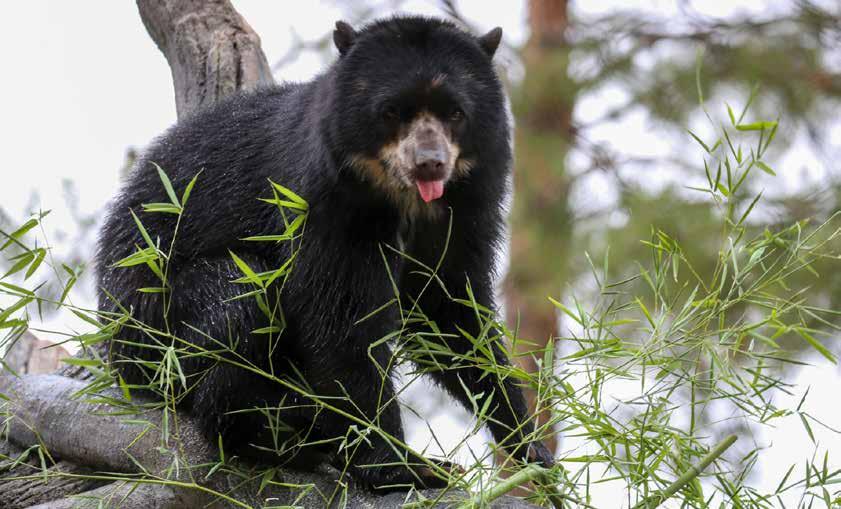
FFrom African safaris to native wildlife sanctuaries, Arizona’s zoos and wildlife parks bring the world’s most fascinating creatures right to your backyard. Discover eight extraordinary animal destinations where desert landscapes and pine forests become home to exotic species from across the globe.
Just west of Tucson, this 98-acre oasis blends the best of a zoo, botanical garden, natural history museum, aquarium and art gallery. Home to more than 240 animal species and 1,200 types of plants native to the Sonoran Desert region, the museum offers a unique outdoor experience with 2 miles of walking paths through desert habitats. Popular exhibits include bobcats, ocelots, mountain lions and Mexican gray wolves. Two walk-in aviaries and the seasonal Raptor Free Flight program offer spectacular bird encounters. Children can dig for fossils or explore the Packrat Playhouse, while adults enjoy the museum’s extensive mineral collection and 10,000-square-foot art institute.
desertmuseum.org


Tucked away in the heart of Tucson, this 24-acre wildlife haven houses more than 500 animals from various regions of the world. The Expedition Tanzania area, featuring one of the best zoo elephant habitats, offers various viewing opportunities of the elephant herd’s daily activities. Beyond iconic species like African elephants and reticulated giraffes, visitors can marvel at lesser-known animals including giant anteaters, capybaras and Andean bears. Daily zookeeper talks provide fascinating insights into the animals’ care and conservation.
reidparkzoo.org
This 104-acre preserve in Camp Verde brings visitors an authentic African safari experience in the heart of Arizona. Founded in 1988 by Dean and Prayeri Harrison, the park is dedicated to providing spacious natural habitats for its residents, many of which are rescues. Signature experiences include the African Bush Safari, Tiger Splash show and Predator Feed, where visitors can witness big cats in action. The park’s conservation efforts focus on education and creating meaningful connections between humans and animals.
outofafricapark.com

Nestled in the cool pines of Prescott, this nonprofit sanctuary specializes in rescuing and rehabilitating native and exotic animals that cannot be released back into the wild. Visitors can enjoy close encounters with mountain lions, black bears and Mexican gray wolves while learning about conservation. The sanctuary features a covered picnic pavilion, children’s playground and the famous Tarantula Grotto—one of the largest public displays of spiders in the country. Special experiences include keeper talks and seasonal after-hours flashlight tours.
heritageparkzoo.org


Located along historic Route 66 in Valentine, this accredited nonprofit rescue sanctuary has protected abused, neglected and abandoned wildlife for more than 30 years. Founded by former Las Vegas illusionist Jonathan Kraft, the sanctuary provides 175 acres of natural habitat for more than 140 rescued animals spanning nearly 40 species. Visitors can join three daily guided safari tours, with the 3:30 p.m. feeding tour being particularly popular.
keepersofthewild.org
Located in Williams, this unique drive-through wildlife park allows visitors to view North American animals in natural habitats from the comfort of their vehicles. The 3-mile drive showcases wolves, bison, bighorn sheep, and the park’s namesake black bears. For a closer experience, the Fort Bearizona walking area features additional exhibits including otters, beavers, and the popular jaguar habitat. Daily birds of prey shows highlight the aerial skills of hawks, owls and falcons against the backdrop of northern Arizona’s pine forests.
bearizona.com


This charming 10-acre animal wonderland on historic Route 66 near Williams offers a hands-on experience unlike any other wildlife attraction in Arizona. Visitors can walk among and feed gentle deer that eagerly approach for treats, while more adventurous guests might find themselves kissing a camel or chatting with Mozart the umbrella cockatoo. The farm also houses wallabies, coatis and other exotic creatures in an intimate, family-friendly setting perfect for visitors of all ages.
deerfarm.com
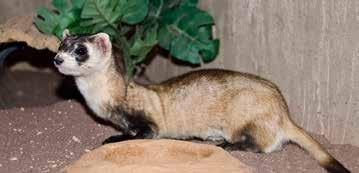
The only Native American-owned zoo in the U.S., this hidden gem in Window Rock offers a unique sanctuary for native wildlife and a fascinating glimpse into Navajo culture. What began with a single orphaned black bear in the 1960s has grown to house more than 100 animals representing 50 different species, most found injured or orphaned in the Southwest. The Golden Eagle Sanctuary and Education Center, opened in 2016, allows visitors to view these majestic birds up close while providing molted feathers for Navajo ceremonial purposes. The zoo also showcases endangered species such as the black-footed ferret and Mexican gray wolf.
navajozoo.org




Writer Joseph J. Airdo //
SSummer in Arizona unfolds like a magnificent tapestry when viewed from above. The familiar becomes extraordinary, and what we think we know about our state transforms into something entirely new when seen from an aerial perspective. While ground-level explorers navigate trails and highways, discovering Arizona from above reveals patterns, textures and colors that remain hidden to the earthbound traveler.
The dramatic diversity of our state’s topography becomes most apparent when viewed from the sky. From the undulating terrain of the northern regions to the striking geology of central Arizona, each area tells its own unique story — one that can only be fully appreciated when seen from a bird’s-eye view. Summer travel across Arizona’s varied landscapes reveals a state of striking contrasts: vermilion cliffs against azure skies, emerald waterways cutting through golden terrain, and the complex geometry of human settlements nestled within nature’s grand design.
Through the remarkable drone photography of Anthony Giammarino, Images Arizona invites readers on an aerial journey across the state’s diverse regions beyond the Phoenix metropolitan area. This two-part summer photo essay series captures the essence of Arizona’s exterior destinations as they’ve rarely been seen before — hovering at that perfect altitude where both the majesty of the landscape and its intricate details are simultaneously revealed.
Giammarino, whose passion for drone photography has taken him to virtually every corner of Arizona, has a unique ability to capture our state’s distinctive character from above. Having relocated to Arizona from New York in 2018, he brings an outsider’s appreciation combined with a local’s intimate understanding of what makes our state extraordinary. His work invites us to see familiar landmarks and hidden gems with fresh eyes — the way a soaring bird might experience them.
As you embark on your own summer travels, let these images inspire you to experience the ascent and appreciate Arizona’s remarkable beauty from every possible angle.



The Montezuma Well in Rimrock harbors five species found nowhere else on Earth: a diatom, a springsnail, a water scorpion, an amphipod and a leech — all thriving in water containing high levels of arsenic that would be lethal to most organisms.

Just one year after opening in 1970, Sunset Point Rest Area gained national fame as America’s “outstanding safety rest area” and was even featured on Pittsburgh television as a model for Pennsylvania to emulate.

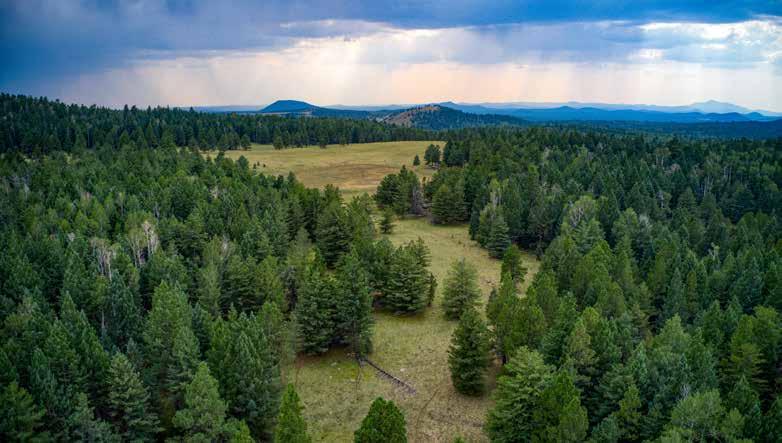

Anthony Giammarino discovered his passion for visual storytelling at an early age, but it was drone photography that truly ignited his creative vision. Born and raised in Binghamton, New York, Giammarino found himself increasingly drawn to Arizona’s distinctive landscapes during visits to family and friends. In 2018, after being captivated by the state’s extraordinary beauty from an aerial perspective, he made the life-changing decision to relocate to Phoenix.
Founding Airobird Drones, Giammarino initially focused on real estate photography while exploring Arizona’s diverse regions with his drone. What began as weekend adventures quickly evolved into a passionate pursuit to capture the state’s remarkable diversity from above. His unique perspective — hovering at lower altitudes than traditional aerial photography — reveals details and patterns invisible from both ground level and high-altitude aircraft.
While his commercial work keeps him busy, Giammarino’s true passion lies in revealing Arizona’s exterior regions through his Instagram account @AntsDrone. His aerial explorations have taken him from the red rocks of Sedona to the canyons near Flagstaff, from the riparian corridors along the Verde River to the distinctive formations surrounding Prescott. Each expedition reinforces his belief that Arizona offers unparalleled opportunities for drone photography.
“Arizona reveals itself completely differently from the air,” Giammarino explains. “Colors become more vivid, patterns emerge from seemingly random landscapes, and you begin to understand how everything connects in ways you simply can’t see from the ground.” airobird.com

AArizona’s museum scene is as diverse as its stunning landscapes, featuring both world-renowned institutions and hidden gems that showcase the state’s rich history and vibrant culture. Discover 10 extraordinary museums where curious minds can explore everything from miniature marvels to Cold War relics, offering glimpses into Arizona’s lesser-known stories and passions.
Housed in a historic 113-year-old building in the charming border town of Douglas, this unique museum boasts the world’s largest collection of Last Supper art and related items. The collection represents artistic traditions from every continent except Antarctica and began with curator Eric Braverman’s lifelong passion, expanding when he acquired the 50-year-old collection from the Last Supper Museum in Greensburg, Indiana. Visitors can marvel at more than 650 pieces on display, with an additional 2,000 stored in the vault. The museum’s crown jewel is a nearly 30-foot outdoor art display created by local artist Adolpho “Wacho” Garcia on recycled corrugated metal, designed to match the dimensions of Leonardo da Vinci’s iconic painting in Milan.
lastsuppermuseum.com


Nestled in the foothills of the Santa Catalina Mountains, this 10-acre national historic district was designed and built by acclaimed Arizona artist Ettore “Ted” DeGrazia from 1951 to 1965, with help from his Yaqui and Tohono O’odham friends. The property features a mine entrance-inspired doorway with copper ore, an awe-inspiring cholla cactus floor, and six permanent collections of paintings that trace the historical events and Native cultures of the Southwest. Rotating exhibitions showcase some of the 15,000 DeGrazia originals, including oils, watercolors, sketches, sculptures, ceramics and jewelry, while a stunning life-size bronze of the Yaqui deer dancer graces the courtyard.
degrazia.org
Housed in a former hardware store in Tucson, this dazzling museum showcases vintage signs and neon art that illuminate Arizona’s vibrant roadside history. Founded by veteran sign restorer Jude Cook, who has saved 26 of Tucson’s iconic neon landmarks over four decades, visitors can marvel at mesmerizing displays dating back more than 75 years, including the recently restored midcentury atom from the Mr. Quick Hamburger sign, the 17-foot Arby’s hat and the rotating 76 ball. Beyond visual treats, the museum offers interactive displays, scavenger hunts and live neon-bending demonstrations where artisans shape glass tubes into glowing masterpieces. For a special experience, check out the popular “Ignite at Night” events, when the museum opens after hours to celebrate newly restored signs.
ignitemuseum.com
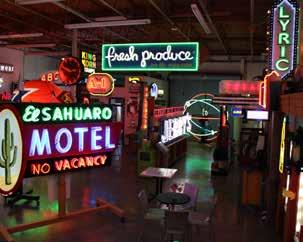
The Mini Time Machine Museum of Miniatures in Tucson transports visitors through time and space via more than 500 meticulously crafted miniature houses and roomboxes. Founded by Patricia and Walter Arnell, this enchanting space showcases everything from antique dollhouses dating to 1742 to contemporary fine-scale miniatures created by artists from around the world. Popular exhibits include a miniature bookstore featuring more than 1,500 handmade tiny books and a miniature weaving studio with a fully functional, four-harness loom complete with an in-progress tapestry.
theminitimemachine.org


Located on the historic Tucson Rodeo Grounds, this unique museum featured on PBS’ “Antiques Roadshow” offers a fascinating journey into Arizona’s transportation history. The facility houses more than 100 horse-drawn carriages and wagons across four buildings, alongside displays in the historic hangar from America’s first municipally owned airport. The collection began in 1925 when the Tucson Rodeo Parade Committee started collecting wagons for its annual parade. The museum’s standout exhibit is Emperor Maximilian of Mexico’s luxury coach — commissioned by Napoleon, built in Paris and restored by an Amish wagon builder. Other noteworthy pieces include Tucson’s first fire wagon, the police department’s jail wagon and Sabino Otero’s buggy.
tucsonrodeoparade.com/the-museum
Train enthusiasts of all ages will delight in this Tucson gem that began as a modest club of 25 people in 1980 and has grown to include more than 130 members. The nonprofit museum features multiple operating toy train layouts in a variety of gauges, from tiny Z scale to garden-sized G scale trains, all set in meticulously detailed landscapes. What makes this museum particularly special is its interactive nature — visitors can operate the trains and accessories themselves by pushing buttons located throughout the 6,000-square-foot display area. The museum regularly hosts special events, including swap meets and seasonal holiday displays that bring the magic of model railroading to life.
gadsdenpacific.org
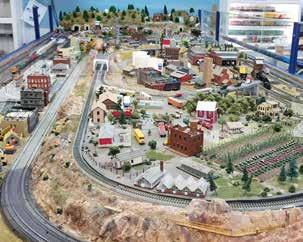


Located on the University of Arizona campus in Tucson, this museum houses more than 10,000 historical artifacts that trace the evolution of pharmacy from ancient times to the present day. Originally established in 1966 with pharmacist Jesse Hurlbut’s personal collection, it was renamed and relocated in 2022 thanks to alumnus R. Ken Coit’s generous support. The museum’s crown jewel is the prestigious Upjohn Pharmacy collection from Disneyland’s Main Street, U.S.A. (1955-1970), featuring authentic pharmaceutical antiques from around the world. Other highlights include notorious gangster John Dillinger’s chewing gum, collected from Tucson’s Owl Drug Store in 1934, and the Dr. Mary Estill Caldwell collection honoring a pioneering woman in Arizona’s health science history.
museum.pharmacy.arizona.edu

Housed in a former high school in Clarkdale, this 2014 Governor’s Tourism Award winner showcases Arizona’s copper mining heritage through an impressive collection of more than 5,000 copper art pieces and artifacts. Visitors can explore centuries of copper craftsmanship with pieces dating back to the 16th century, revealing the metal’s significance in art, military history, kitchenware and architectural elements. The museum’s comprehensive exhibits highlight Arizona’s position as a global copper producer and demonstrate how this versatile metal has shaped the state’s economy and cultural legacy.
arizonacopperartmuseum.com


Located in Williams, this unexpectedly fascinating museum is dedicated entirely to coprolites — fossilized dinosaur poop. Founded by Guinness World Record holder George Frandsen, the Poozeum blends natural history, art gallery and carnival sideshow aesthetics to create a uniquely educational experience. The collection features thousands of authentic specimens from around the world, including “Barnum,” the world’s largest carnivorous coprolite, and a 4-foot-wide titanosaur poop replica. Visitors can snap selfies with “The Stinker,” a bronze Tyrannosaurus rex on a toilet, marvel at vibrant hand-painted banners and browse a quirky gift shop filled with dino-themed treasures. Equal parts scientific and irreverent, this free attraction offers an unforgettable glimpse into prehistoric biology.
poozeum.com
Step into a surreal world of movement and imagination at this Tucson museum, home to nearly 100 animated sculptures crafted from everyday objects by artist Ned Schaper, aka Mat Bevel. Each piece is a whimsical contraption brought to life through pulleys, levers and found materials, blurring the line between art and machine. Highlights include “The Blood Vessel,” a shiplike creation piloted by Schaper’s alter ego, and the fog-belching “Energy Plant.” Unlike traditional museums, visitors are encouraged to interact with many of the pieces, activating their kinetic elements. The museum regularly hosts performances and hands-on demonstrations where creativity is literally set in motion, offering an immersive experience where discarded objects find new purpose as mechanical art.
matbevelcompany.org


Arizona’s automotive heritage comes alive in seven remarkable museums preserving the vehicles, innovations and stories that shaped the Southwest.
• Franklin Auto Museum (Tucson) preserves the legacy of Franklin’s air-cooled automobiles with more than 25 classic models housed in a historic adobe home. Highlights include two time capsules — a 1910 model and 1924 model with the lowest original mileage remaining. franklinmuseum.org
• Rolling Thru Time Auto Museum (Tucson) showcases 225 vehicles spanning four generations of family collecting, featuring a recreated vintage Ace Hardware store, Model T assembly line and displays enriched with family photographs. rttmuseum.com
• Tucson Auto Museum (Tucson) houses more than 75 roadworthy classics, including Hollywood vehicles from “Batman” and a 1929 Duesenberg Model J, plus “The Batcave” display with two Batmobiles. tucsonautomuseum.org
• JWJ Cycles Museum (San Manuel) celebrates a family’s two-wheeled passion through 100 motorcycles and serves as an active hub where riders can stage trips, stay overnight and participate in events. jwjcycles.com
• Dwarf Car Museum (Maricopa) displays Ernie Adams’ handcrafted, scaled-down replicas of classic cars, including his first 1965 creation “Grandpa Dwarf.” Most surprising is that eight of these miniatures are street-legal and can reach highway speeds. dwarfcarmuseum.com
• Art Car World (Douglas) showcases 42 vehicles transformed into mobile art pieces by owner Harrod Blank and fellow artists. Signature pieces include “The Carthedral” and Blank’s “Camera Van,” with custom tours available. artcarworld.org
• Arizona Route 66 Museum (Kingman) offers two experiences in one: a journey through the Mother Road’s evolution and the world’s first museum dedicated to electric vehicles, featuring a Tesla Roadster II. mohavemuseum.org



IImagine floating through the heart of the Grand Canyon, towering rock walls rising thousands of feet above as you navigate churning rapids and discover hidden treasures inaccessible by land. For adventure-seekers, rafting the Colorado River offers an unparalleled perspective of one of America’s natural wonders.
“The Grand Canyon is an amazing trip,” says Dean Knuth, marketing director for Arizona River Runners. “Most people who take one of our trips have never been rafting before, and a subset of those have never been camping before. They really want to push themselves to do something amazing.”
More than a dozen river outfitters are licensed to offer rafting trips through the Grand Canyon. Tours depart from Lees Ferry, the official beginning of Grand Canyon National Park, and take guests as far as 280 miles alongside towering rock walls; through whitewater rapids; and past waterfalls, hidden caverns and ancient Puebloan dwellings. Food, sleeping amenities and safety gear are provided, but there is no internet service, and the bed is a sleeping bag in a tent or on the beach.
The most notorious challenge is Lava Falls Rapid. Rated 9 out of 10 in difficulty, the 20-second run is brief but terrifying as rafts bob like toys through churning waves.
The journey offers far more than just river running.
“There are some really amazing things to see and do,” Knuth notes. “We try to do one or two daily side hikes on every trip.”
Popular attractions include Redwall Cavern, a massive amphitheater-style cave that American explorer John Wesley Powell once said “would give seating to 50,000 people,” and the Nankoweap Granaries, 1,000-year-old Puebloan storage structures carved high on a cliff.
Visitors also discover hidden waterfalls, fossilized nautiloids from 400 million years ago, and in spring, the brilliant turquoise-hued pools of the Little Colorado River.
For many adventurers who have previously hiked the Grand Canyon’s trails, rafting offers a completely


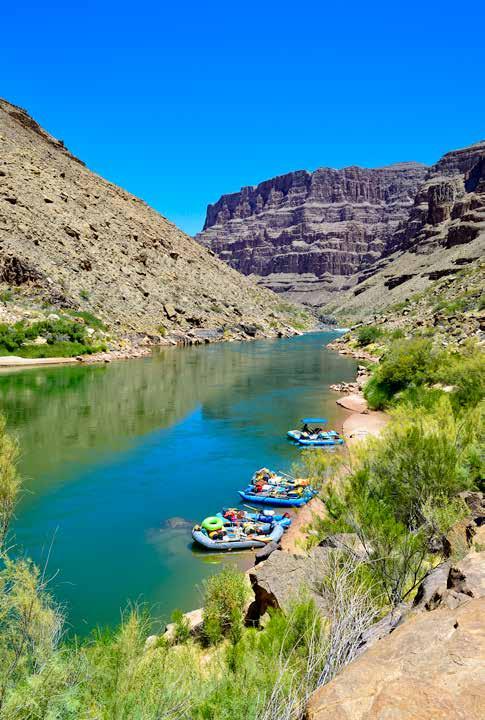
different perspective. Seeing the canyon from below while snaking along the river reveals connections between iconic landmarks like Bright Angel, Phantom Ranch, Havasupai and the North Rim that aren’t apparent from above. Though immensely rewarding, the journey challenges travelers to step far outside their comfort zones.
Heat, scorpions, rattlesnakes and constantly being wet are just some of the discomforts of the trip. And while most of the river is smooth, some whitewater rapids can churn up large — and dangerous — waves.
The guides’ primary job is ensuring safety through serious rapids, and while the adventure doesn’t require peak physical fitness, it does demand courage, an open mind and readiness for the unexpected.
The most notorious challenge is Lava Falls Rapid. Rated 9 out of 10 in difficulty, the 20-second run is brief but terrifying as rafts bob like toys through churning waves.
Despite hosting approximately 20,000 rafters annually, outfitters maintain impeccable environmental standards.
“We pack up every little piece of microtrash,” Knuth emphasizes. “When we pull away from a campsite, it looks exactly like it did when we pulled in.”
Those who complete the journey often describe it as transformational — a unique fellowship that provides a profound sense of accomplishment. Rafters return with shifted perspectives, having confronted their fears, committed fully to the adventure, and conquered an endeavor few will ever attempt.
raftarizona.com

While the Sonoran Desert might not conjure images of elegant chateaus surrounded by verdant vineyards, the Grand Canyon State has supported grape growing and wine production for thousands of years. Spanish missionaries introduced viticulture to the Southwest in the 1600s, and Father Eusebio Francisco Kino, who founded the San José de Tumacácori mission, had a small vineyard in present-day Sonora, Mexico.
The first commercial winery in the state was established in Mesa in the 1880s; another popped up near Sedona a few years later when Heinrich Schuerman arrived in 1884 and planted an orchard and vineyard. By the end of the 19th century, Arizona’s wine industry was flourishing.
Prohibition put a stop to the business, and it would take several decades for it to begin to come back. But come back it has—with gusto! Today, there are more than

Because Arizona’s regions sit at elevations between 3,500 and 5,000 feet above sea level, they tend to have climates and terroirs similar to regions in Italy, Spain and southern France: cooler temperatures, dry high-desert air and rich loamy soil.

120 wineries and tasting rooms across the state—located on more than 1,300 acres of vineyards—and most welcome guests for tastings, tours and even overnight stays.
Arizona offers three main American Viticultural Areas, or AVAs, located north and south of Phoenix: Sonoita-Elgin (the oldest), Willcox (the largest), and the Verde Valley (the newest). Additional vineyards and wineries exist in other parts of the state, in places like Kingman, Williams and Chino Valley. The Arizona Wine Growers Association refers to these outliers as mavericks and pioneers.
Because Arizona’s regions sit at elevations between 3,500 and 5,000 feet above sea level, they tend to have climates and terroirs similar to regions in Italy, Spain and southern France: cooler temperatures, dry high-desert air and rich loamy soil. It’s why so many grapes traditionally grown in the Mediterranean thrive here.



Established in 1984, the Sonoita-Elgin AVA covers about 320 square miles in southeastern Arizona, about an hour’s drive from Tucson. It was the first region in the state to be designated an AVA, and it has been recognized as one of the top 10 wine trails in the country by USA Today.
More than 15 wineries dot a 10-mile radius along Route 82 wedged between the Santa Rita, Whetstone and Huachuca mountains. Dos Cabezas WineWorks is known for its rosé blend, Pink, a refreshing mix of Garnacha, Syrah, Graciano and more. The most recent addition, opened in February 2023 by Scottsdale restaurateur Pavle Milic, is Los Milics, a 20-acre vineyard, tasting room and winery.
The Willcox AVA, which lies east of Tucson, produces about 75% of the state’s grapes. Covering about 833 square miles in northern Cochise and southern Graham counties, it includes the town of Willcox as well as Pearce, Sunsites and Sunizona.
Area vineyards supply fruit to local favorites, including Caduceus, Merkin Vineyards, Arizona Stronghold and Page Spring Cellars, all of which are based in the Verde Valley. Some stars of the region include Viognier, Tempranillo and Mourvèdre, and its Malbec, Merlot, Sauvignon Blanc and Cabernet Sauvignon varietals are award-winning.
For an overnight option, check out Rhumb Line Vineyard, which offers chic, comfortable Quonset huts set amid a blooming lavender field.
Verde Valley AVA is the newest viticultural area, designated in November 2021. Located in the center of the state on 219 square miles in northeastern Yavapai County, the AVA encompasses the popular getaway destinations of Sedona, Jerome, Camp Verde, Cottonwood, Clarkdale, Cornville, Page Springs and Rimrock.
The high desert region boasts about 20 vineyards and two dozen of Arizona’s most scenic tasting rooms, many of which rest on the banks of picturesque Oak Creek. Here, travelers can sample white wines made

The Grape Escape Bike Tour organized by 360 Adventures offers riders the choice between a 10-, 20- or 37-mile bike ride from Sedona to Page Springs Cellars. There, you can enjoy a five-wine flight tasting and a guided cellar tour. With sun-drenched bike rides through Red Rock Country, towering rock formations and deep vistas, Sedona offers the wine-touring cyclist many challenges and personal rewards. 360-adventures.com
A scenic air tour with 360 Adventures includes flying past the ridge of Pine Mountain with views of the Verde Valley, Montezuma’s Well and the red rocks of Sedona. Once landed at the Sedona Airport, you’ll be escorted to a private luxury limo bus and travel to three distinct area wineries, with a picnic lunch at one of the vineyards.
360-adventures.com
Organized by Sedona Adventure Tours, the Classic Water to Wine Tour begins with a one-hour kayak trip on a scenic stretch of the Verde River. The floating trip ends at the confluence of Oak Creek and the Verde River, where you’ll take a pathway up through the vineyards to Alcantara Vineyards. The Verde River is still one of Arizona’s best-kept secrets, and kayaking to reach wineries offers a remarkable way to discover the region’s geology, flora and fauna. sedonaadventuretours.com
Experience northern Arizona’s wine country on the Verde Canyon Railroad. The Grape Train Escape takes passengers through the scenic mountains and red rocks of the Verde Valley while they sip on a selection of local wines. Additional trips focus on European varietals.
verdecanyonrr.com


You might presume that a wine country vacation must entail a pricey flight to Napa or an arduous car journey through California traffic to Paso Robles. You’ll be pleasantly surprised to learn that none of that strain or expense is necessary — not when Arizona has its own beautiful wine-growing region just up the road in the Verde Valley.
Leon “Jay” Morton’s AZ Wine Crawler daily shuttle eliminates the need for a designated driver with either a VIP experience from Phoenix or a hop-on, hop-off option that cycles through Cottonwood and Sedona every 50 minutes.
“We are the ultimate wine tour alternative,” Morton says. “Standard tours only take visitors to three wineries in Page Springs Canyon. People miss out on the majority of what the area has to offer.” Instead, his service connects eight vineyards, seven tasting rooms and numerous eateries, allowing guests to craft their own adventure.
A day might include barrel room tastings at Javelina Leap, the irreverent atmosphere of Chateau Tumbleweed, lunch in Old Town Cottonwood and wine on the deck at Page Springs Cellars overlooking Oak Creek. For those wanting to extend their stay, Morton’s rustic-chic Acoustic Cellars Lodge offers accommodations near the wine canyon—a fitting creation from this Blues Hall of Fame musician and wine podcast host.
As the stars twinkle in the dark sky above, you’ll return to your accommodations with a new appreciation for Arizona’s thriving wine culture and a collection of bottles to savor long after your visit.
azwinecrawler.com
with Vermentino, Seyval blanc and Malvasia bianca, and reds featuring Syrah, Sangiovese, Tannat and Barbera.
“You can’t help but feel connected to the earth and dirt and all the happiness it gives back to you when sampling the wine here,” says Byron Clammas, a tour guest from Scottsdale visiting Javelina Leap Vineyard, just one of the many popular Verde Valley wineries.
The Verde Valley offers the climate and sourced access to water that grapes need to thrive. The plentiful sunshine and dramatic evening cool-downs, combined with rich volcanic soil, create an ideal environment for robust boutique vineyards. These small-production vineyards showcase the passion of the local winemakers.
No matter which AVA you choose to explore, certain wineries stand out for their unique offerings and experiences.
At Javelina Leap Winery in Cornville, third-generation winemaker Lucas Reed welcomes visitors into the barrel room and shares his unique secondary fermentation process and his awards for Arizona’s Best in Class Petite Sirah and Double Gold Award for Riesling.
The cheeky wine labels by artist-owner Chris Pothier hint at the personality of Chateau Tumbleweed, a hip, irreverent little winery (which keeps its awards in the bathroom) in Clarkdale. Visitors can enjoy flights of small-production reds on their sunny patio.
At Page Springs Cellars, the cottonwood trees turn a brilliant yellow as the sun begins to set, casting a golden light on the expansive grounds. Guests can taste wines while sitting on a deck overlooking Oak Creek as it ripples past.
“I love that the Verde Valley has really become a destination, whether you’re from in or out of state,” says Christina Barrueta, who writes the award-winning Write On Rubee blog and authored “Arizona Wine: A History of Perseverance and Passion.” “It’s one of the prettiest regions in all of Arizona with so many things to do. It’s ideal for a weekend getaway.”
Whether you explore by car, shuttle or through one of the more adventurous options, you’re guaranteed to see some of the most beautiful scenery in the country and sample some delicious wine. So head out for a vino-centric adventure through Arizona’s wine country. Cheers!





SStep into Stumblina’s Cantina and experience a new chapter of Southwestern dining within the welcoming Prickly Pear Plaza. With its sweeping views of Black Mountain and a charismatic blend of Old West nostalgia and contemporary flair, Stumblina’s continues to captivate both locals and visitors — now unveiling fresh enhancements to its menu and atmosphere.
This summer, guests can enjoy a newly upgraded patio that offers an even more comfortable and inviting setting for outdoor dining and live music. The refreshed space encourages visitors to relax and take in the lively energy, desert scenery and vibrant sunsets that define Cave Creek evenings.
Inside, diners will find enticing new menu items that add fresh variety and creativity to the beloved lineup of Southwestern-inspired dishes. While longtime favorites like the Bat Masterson’s Shredded Pork Green Chili Platter remain a staple, guests can look forward to exploring inventive additions and seasonal specials — all crafted with Stumblina’s signature quality and flair.
Signature cocktails remain at the heart of the experience. Guests can toast with colorful prickly pear margaritas
or enjoy creative new refreshments at the bar, alongside classic favorites like the Stum-Belini and various Chakra Vodka mules.
The cantina’s renewed energy extends to the atmosphere. Whether you’re seated in the lively dining room or out on the patio, the blend of rustic decor, elevated service and live performances creates a festive, welcoming environment.
End on a sweet note with indulgent desserts like the housemade chocolate chip cookie skillet with cinnamon ice cream or the ever-popular prickly pear ice cream sourced from The City Creamery.
With a refreshed menu and an upgraded patio, Stumblina’s Cantina continues to set the standard for inventive Southwest dining in Cave Creek — offering not just a meal, but an escape into the spirit and flavor of Arizona.
Stumblina’s Cantina Prickly Pear Plaza
6268 E. Cave Creek Road, Suite 1, Cave Creek
480-687-9077
stumblinascantinaaz.com





Directions:
Yield: 20 toasts
For the Roasted Cherry Tomatoes:
2 tablespoons extra-virgin olive oil
2 tablespoons unsalted butter, melted
1 pound cherry tomatoes
3 garlic cloves, smashed
3 thyme sprigs
Kosher salt and freshly ground black pepper, to taste
For the Whipped Feta:
6 ounces crumbled feta
2 ounces Parmesan cheese, freshly grated
1/3 cup whole milk
1 teaspoon fresh lemon zest
Kosher salt and freshly ground black pepper, to taste
For Assembly:
1 French baguette, sliced into 1-inch-thick pieces on the diagonal
Extra-virgin olive oil, for drizzling
Freshly grated Parmesan cheese, for garnish
Fried basil leaves or thinly sliced fresh basil, f or garnish
As you embark on your summer travels across Arizona’s diverse landscapes, these elegant roasted cherry tomato and whipped feta toasts make for the perfect portable picnic companion or a sophisticated starter after a day of exploration. The contrast of creamy, tangy whipped feta against sweet, bursting roasted tomatoes creates a Mediterranean-inspired dish that complements our state’s sun-drenched bounty. Whether enjoyed on a scenic overlook in Sedona or as an appetizer before dining out in Flagstaff, these beautiful bites capture the essence of summer entertaining.
Preheat oven to 375 degrees. In a shallow baking dish, combine olive oil, melted butter, cherry tomatoes, garlic and thyme. Roast for 20 to 22 minutes or until tomatoes are soft and bursting. Remove from oven, season with salt and pepper, and set aside.
Place feta, Parmesan, milk and lemon zest into a food processor. Season with salt and pepper to taste. Process mixture until completely smooth and creamy.
Place baguette slices on a baking sheet and drizzle with olive oil. Toast in the oven for 6 to 8 minutes or until lightly golden.
To assemble, spread a generous amount of the whipped feta over each toast. Using a slotted spoon, top with several roasted tomatoes. Finish with a light sprinkle of freshly grated Parmesan cheese and a few fried or thinly sliced fresh basil leaves. Serve immediately.
thefancypantskitchen.com





